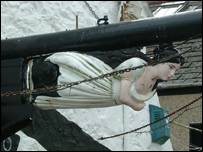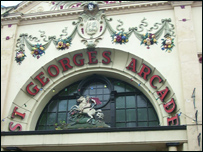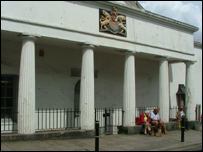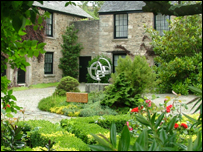
 Coastal
Cornwall
Coastal
Cornwall
Falmouth Coast Walk

 |
||
 |
||
 |
||
 |
||
 |
||
 |
||
 |
||
 |
||
 |
||
 |
||
 |
||
Memories of the maritime past
|
Other Fascinating Falmouth Facts We've visited many of the historical sites in Falmouth's rich history but while you're in the town here are some other places well worth checking out. The Greenbank Hotel is not only famous for its association with the Falmouth Packet Service but also for parts of Kenneth Grahame’s well known book 'Wind in the Willows'. Falmouth's Municipal Offices and Library was erected in 1894 with funds donated jointly by the Cornish philanthropist J. Passmore Edwards and Octavious Allen Ferris. They were responsible for similar charitable gifts to other Cornish towns and villages. The Post Office opened in 1930, and stands on the site of the old Market, which was moved in 1812 from its first location on the Strand. The roofed fountain now standing in the middle of The Moor once stood inside this market. The Moor stands at the lower end of the valley whose stream originally flowed into Smithick Creek, around which the small village of Smithick which existed in the 17th Century. The water from the stream is now piped underground. It later supplied the local breweries which used to stand where Tesco’s supermarket is today. The Packet Memorial dates from November 1898, when a Public Subscription raised nearly £300 for a permanent reminder of the Service which operated from Falmouth between 1688 and 1850. Jacob's Ladder just off the Moor has no real biblical association. Its 111 steps were installed by Jacob Hamblen, builder, tallow chandler and property owner, to facilitate access between his business - at the bottom - and some of his property - at the top. In the main street there are some interesting buildings not covered in the BBC Coast walk. In Market Street Number 27 was once The Old Curiosity Shop. It was owned by local character John Burton. His collection of 'articles' from all over the world soon became famous all over the world. The HSBC Bank was once the home of the very posh Royal Hotel. It was built mainly for the social activities of the Packet Captain. The impressive looking St George's Arcade is today home to many local shops (books, cds, maps, clothes and much more). It was once the home of Falmouth’s first custom-built cinema. When it opened in 1912 it was the second largest in the country! The shop with the four-pillared façade was once the Public Subscription Rooms which opened in 1826. At the time it had six columns. If you know what happened to the other two pillars send an email to cornwall@bbc.co.uk This was the gentlemen’s club at which local merchants and traders met socially and played billiards and where visiting ships’ officers caught up with the news since their last visit to the port. The Parish Church in the town centre was dedicated by Charles II to his father, King Charles the Martyr, soon after the Restoration, in gratitude to the town for its Royalist support during the Civil War. The red brick chimney which stands beside the main entrance to the Quays is the King's or Queen's Pipe. This was used to burn confiscated contraband tobacco by Customs Officers based in the nearby Custom House. The rebuilt Arwenack House was the home of the Killigrew family for about 16 generations, after they acquired the estate by marriage in 1403. It was rebuilt in 1567, when it was described as 'the finest and most costly house in the country'. The house was destroyed by fire prior to the Roundhead occupation of the district and the Siege of Pendennis in 1646, after which is developed into an untidy hotchpotch of ill-planned buildings until reconstruction in its present form. Those are some of the additional sites you may want to visit while
you're in the fascinating Cornish town of Falmouth. Enjoy your walk!
This walk is as featured on the BBC
website in conjunction with the BBC Television series Coast.
|
Coastal Cornwall, Harbour's Reach, King Charles Quay, Falmouth, Cornwall TR11 3HQ
E-mail:info@coastal-cornwall.co.uk Web site design by Slice Internet of Cornwall


